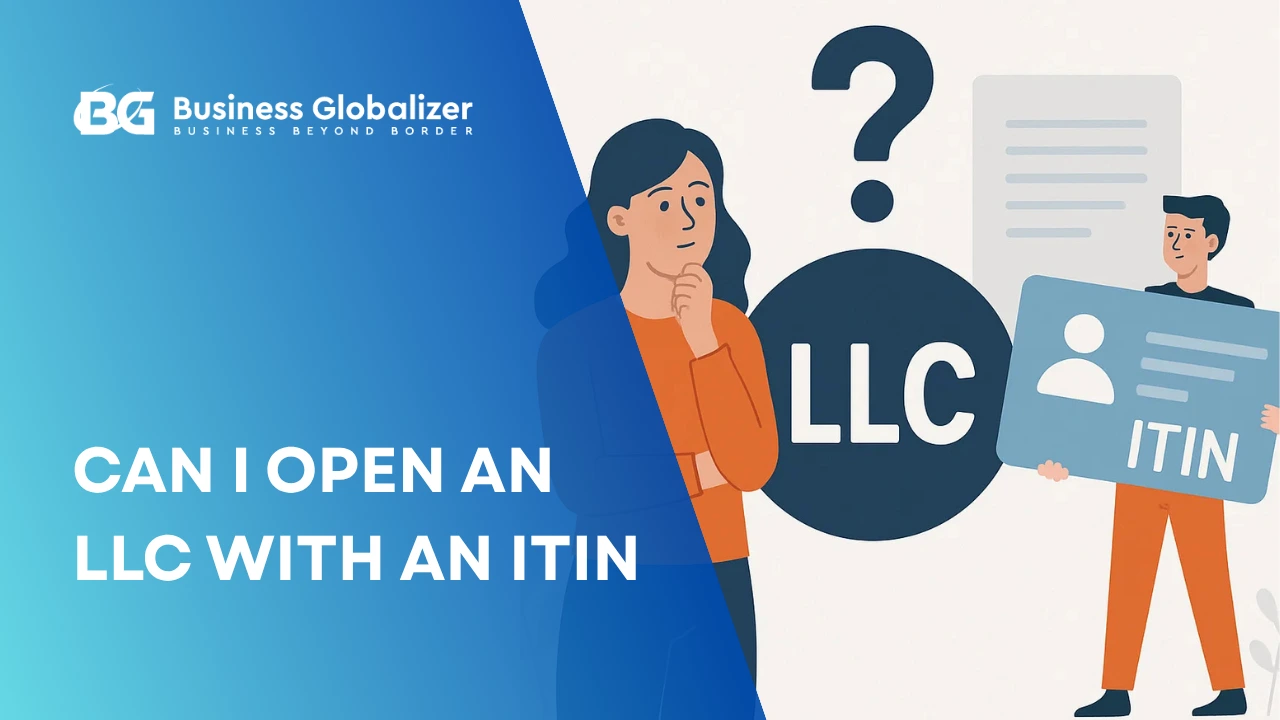If you are establishing or operating business in the UK, you should be well informed about the HMRC UTR number. This essential number simplifies your tax dealings and keeps everything in order.
With this blog, discover why your UTR number is so important and how to get one to keep your business on track. Let’s start!
What Is a UTR Number in the UK?
If you are not yet familiar, let us begin with the fundamentals: the word “UTR” stands for Unique Taxpayer Reference, while “HMRC” refers to His Majesty’s Revenue and Customs.
A Unique Taxpayer Reference is a unique 10-digit number issued by HM Revenue and Customs (HMRC) to businesses or individuals. Imagine it as a personal tax badge. An UTR is a special ID for UK businesses that keep tax records in check.
This number makes sure that everything is correctly recorded and managed whenever you deal with taxes, whether you are filing returns or managing business tax issues.This number makes sure that everything is correctly recorded and managed whenever you deal with taxes, whether you are filing returns or managing business tax issues. Ensuring compliance for your organization and taking care of your tax obligations are essential.
Simply put, an HMRC UTR number is a small but essential tool that helps keep your business’s tax matters running smoothly.
Types of UTRs
Contrary to popular belief, there is actually only one type of UTR number that can be assigned differently to individuals and businesses based on their tax status in the UK:
- For example, when enrolling in self-assessment, a UTR at the personal level is required if you are self-employed, like a sole trader, or have income that necessitates a self-assessment tax return.
- Each business in the UK, whether a partnership or a limited company, is required to have a distinctive UTR for tax purposes at the company level.
Example of UTR Number UK
The format of an HMRC UTR number consists of 10 digits where:
- The first two digits indicate that the tax office issued the number. This identifier helps His Majesty’s Revenue and Customs determine which specific office is responsible for handling the business’s or individual’s tax affairs.
- The middle six digits of the reference number are unique, ensuring that each taxpayer is identified within the same tax office.
- The last two digits are a checksum, used to verify that the UTR number is correct. This helps catch any errors or mistakes in the number.
Here’s an example of UTR number: 12 436578 90.
- 12→ Represents the tax office identifier.
- 436578→ This is the unique reference number.
- 90→ Serves as the checksum.
Note: In some cases, a UTR number (such as 8967-5432-10 or 98765 43210) may be divided into segments of digits or 13 digits in length. The possibility exists that a letter is ensnared at the conclusion. However, do not worry. The same fundamental functions are still carried out with the same purpose.
Who Needs a UTR in the UK?
To correspond with HMRC regarding taxes, every individual in the United Kingdom must have a Unique Taxpayer Reference. Here’s a brief explanation of who requires one:
Individuals
You need a UTR to file your self-assessment tax returns if you’re:
- Self-employed.
- A sole trader.
- Other sources of income that aren’t taxed at the source, like investments, rentals, and freelance work.
This helps HMRC track your income and ensure you’re paying the correct amount of tax.
Company DirectorsDirectors of limited companies need a UTR for their personal self-assessment returns, as they often receive dividends or other taxable income from the company.
Limited Companies
When you incorporate a company, HMRC assigns a UTR to your business. This number is used for corporation tax purposes and other company-related tax matters. It’s crucial for keeping your business’s tax affairs separate from your personal ones.
Partnerships
In a partnership business structure, the business itself and the individual partners are required to have separate UTRs. This number ensures that the income and tax responsibilities are properly tracked, apart from the individual partners’ tax records.
Non-Residents
Even if you’re a non-UK resident, you’ll need an HMRC UTR number to report about UK-sourced income through self-assessment. That includes rental income, investments, or receiving pensions in the UK.
Why Is an UTR Important?
The UTR is quite essential because, within the parameters of the tax system, it gives you or your business a unique identity. This guarantees the accuracy and currency of your tax records.
Nobody can file their taxes without a UTR. When you start operating a limited company in the UK, you must need to register your UTR as “active” for “corporation tax.” This must be completed within 3 months of initiating any kind of business activity.
Additionally, directors of limited companies and members of partnerships need to get personal UTRs for self-assessment returns. This is also required for anyone who earns over £100,000 annually through PAYE employment, including self-employed individuals.
If you do not have one, you could get in trouble with HMRC or be fined. This is required to ensure compliance with UK tax laws and the effective management of your tax obligations. Besides, a UTR plays a key role as an identifier in the case of financial transactions.
What Information Are the UTR Number’s Requirements?
There are specific pieces of information that are required; you just need to provide them when registering for UTR manually:
- Complete name.
- Current home address.
- DOB.
- National insurance number.
- Email address.
- Starting date of self-employment.
- Nature of business.
- Business address/Registered office address.
- Phone number.
- Partnership details.
- Previous tax information.
How to Apply for a UTR Number in the UK?
At this point, you need to understand very clearly that you can’t apply for a UTR directly, whether you are a resident or a non-resident in the UK.
Instead, you need to register yourself as a self-employed person and register your business first. Nevertheless, as soon as you register, your UTR number will be sent to you automatically.
However, the process of registering for self-assessment versus registering a limited company differs slightly in the UK. Let’s explore how to get an HMRC UTR number for different purposes:
Sole Traders and Partnerships: Self-employed individuals, partnerships, and sole traders can get a UTR by registering for self-assessment with HMRC. This can be done online via the HMRC website or by post-filing a paper form.
Once self-assessment is registered, HMRC will issue the UTR by post to your registered office address or business within 21 days.
Limited Companies: For limited companies, the business needs to be registered with the Companies House first. Companies House notifies the HMRC about the incorporation of limited companies.
Then, HMRC will issue the UTR within 15 days at the registered office address by post. It takes longer for overseas limited companies.
How to Get a UK UTR Number for Non-Resident
Non-residents who need to file UK tax returns or have UK income must obtain a UTR. The registration process is similar to that for residents, but you may need to complete additional forms like SA109, especially if you’re not living in the UK. You cannot report your income through HMRC’s online services.
Register with HMRC online or by post, providing your personal details and information about your UK income or tax obligations. HMRC will issue your UTR accordingly.
If the registration is done online, you can see the Unique Taxpayer Reference (UTR) sooner using the Personal Tax Account, Business Tax Account, or HMRC App.
What Happens If I Lose My HMRC UTR Number?
If you cannot remember your UTR number, do not panic. Make sure you look over each of the following documents to get a lost UTR number:
- Personal Tax Account.
- Business Tax Account.
- HMRC App.
- Other documents from HMRC. Or,
- On previous tax returns.
If you are still unable to view it, you should give HMRC a call. Since each person’s UTR number is distinct, you must safeguard yours.
In the worst-case scenario, losing a UTR in the UK could lead to identity theft, including potential risks.
FAQs
Q1: Does My UTR Number Change if I Incorporate a New Limited Company?
Answer: It depends. In personal terms, your personal UTR stays the same but the launch of a new limited company comes with a new distinct identifier.
Q2: Can I Change a UTR Number?
Answer: No. You can’t change a UTR number, whether it’s for personal or company purposes. Once the UTR number is issued, it remains the same throughout the entire life.
Q3: Is My UTR Number the Same as My National Insurance Number?
Answer: No, your UTR number is different from your National Insurance number. The UTR is for tax purposes, while the National Insurance number is for social security and benefits.
Final Thoughts
Understanding the importance of the HMRC UTR number is essential for anyone doing business or self-employment in the UK. This unique 10-digit identifier plays a crucial role in ensuring your tax affairs are accurately managed. Whether you’re a sole trader, a company director, or even a non-resident with UK tax obligations, having a UTR is non-negotiable.
While the process of obtaining a UTR varies depending on your status, the underlying requirement is the same: accurate and timely tax management.






